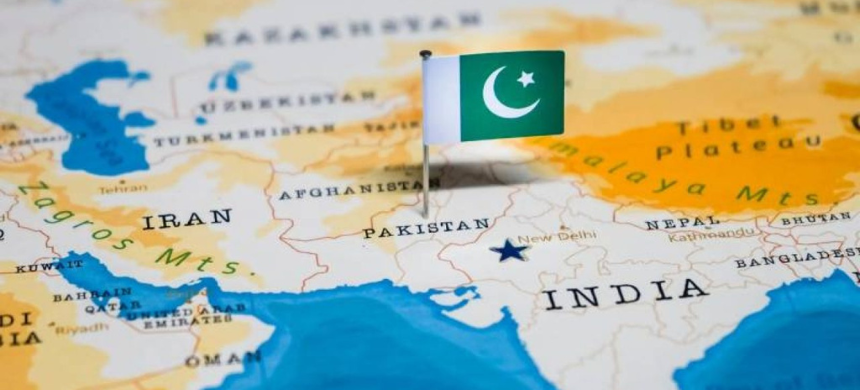Pakistan: Asia’s New Power Keg – From Doctrine to Dominance
A brief but intense war between Pakistan and India from May 7 to May 10, 2025, has dramatically reshaped South Asia’s strategic and geopolitical order. The four-day conflict saw two nuclear-armed nations engage in a high-tech confrontation, utilizing advanced military technologies that not only stunned the region but also captured the attention of global powers.
From hypersonic and ballistic missile systems to AI-powered platforms, cyber warfare, UAV swarms, and space-based surveillance, both sides demonstrated cutting-edge capabilities. But it was Pakistan’s swift and coordinated response—under the renewed “China-Pakistan Friendship Doctrine”—that outmatched India’s military prowess, shattering its long-standing regional dominance.
Trigger Point: Pahalgam Attack and Escalation
The conflict erupted after a terrorist attack in Pahalgam, Indian-administered Kashmir, on April 22, 2025, that left 26 people dead. Within hours, Indian Prime Minister Narendra Modi blamed Pakistan and revoked the historic Indus Waters Treaty, originally brokered by the World Bank.
In response, Pakistan called for an independent international investigation and sought diplomatic intervention from the UN, USA, Saudi Arabia, UAE, and Iran. Despite Islamabad’s outreach, India launched a preemptive strike on the night of May 6–7, targeting both civilian and military areas in Pakistan with air strikes, drones, and missiles.
Pakistan’s Decisive Counterstrike
On May 10 at 5:16 AM, Pakistan launched Operation Bunyan-um-Marsoos, a comprehensive counterattack targeting 26 Indian military sites, including missile depots, air bases, radars, and command centers. This calculated offensive neutralized India’s S-400 defense systems and stunned New Delhi into seeking an immediate ceasefire through US President Donald Trump.
Air Superiority and Electronic Warfare
Pakistan’s JF-17 Thunder and J-10C fighters, armed with PL-15 and CM-400AKG missiles, gained air dominance by shooting down seven Indian jets, including Rafale aircraft. Backed by AWACS systems, Pakistan’s air force demonstrated seamless joint operations with its navy and army.
India’s use of Israeli Harop drones was met with advanced countermeasures. Pakistan’s Bayraktar TB2 drones, combined with electronic warfare capabilities, intercepted and disabled 85 Indian UAVs. Meanwhile, cyber operations crippled India’s military communication and intelligence networks.
Naval and Strategic Superiority
Pakistan’s navy forced the INS Vikrant aircraft carrier to withdraw from the Arabian Sea. Using underwater drones and space-based Chinese reconnaissance, Pakistan secured key shipping lanes, disrupting Indian logistics and supply chains.
Economic Fallout and Global Ripples
The war cost India billions in damages within days. Experts projected a staggering $17.8 billion/day economic impact had the war continued. Global markets, particularly in the US, UK, EU, and GCC, experienced volatility due to their deep economic ties with India.
A United Pakistan, a New Power Axis
The conflict unified Pakistan, transcending internal political divides. Public support surged for the armed forces and COAS Gen Asim Munir, whose leadership was credited for Pakistan’s tactical and diplomatic success. From Balochistan to Gilgit-Baltistan, citizens rallied behind the military effort.
Meanwhile, China and Pakistan’s alliance grew stronger, integrating military interoperability and intelligence sharing under the broader umbrella of the Belt and Road Initiative (BRI). What began as an economic vision now functions as a dual-purpose security and development framework.
Regional Security Shift and Strategic Lessons
The conflict validated the Regional Security Complex Theory (RSCT) by Barry Buzan and Ole Wæver, demonstrating how regional interdependencies shape military alliances and deterrence. The war opens opportunities for deeper strategic cooperation with Afghanistan, Sri Lanka, Myanmar, and Bangladesh, countering India’s regional influence.
China’s involvement, including satellite and cyber warfare support, showcased its multi-domain dominance—sending a clear signal to adversaries like the US and Taiwan about its readiness for high-tech warfare. Control over key maritime chokepoints like the Strait of Malacca further solidified China’s regional hold.
Market Realignments Reflect Military Realities
Markets responded sharply: shares of China’s Chengdu Aircraft Corporation (maker of the J-10) surged, while France’s Dassault Aviation (Rafale manufacturer) saw declines, reflecting investor sentiment in emerging military technology and defense dominance.
Call for Diplomacy and Lasting Peace
The May 2025 war is a defining moment in Asia’s military history. It emphasized the role of next-generation warfare and raised urgent questions about long-standing issues like Kashmir, water sharing, and proxy conflicts. Both India and Pakistan must now pursue diplomacy and development, rather than an unsustainable arms race.
With regional and global implications, the war’s aftermath demands coordinated international efforts to mediate peace and establish sustainable regional stability in South Asia.











